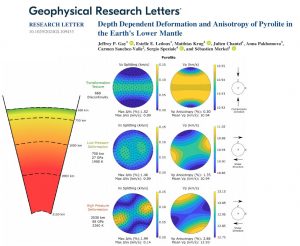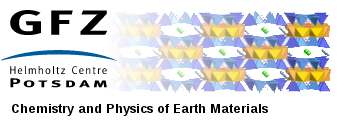 Yet another publication from the TIMEleSS team! Former TIMEleSS PhD student Jeff Gay has a new paper entitled Depth Dependent Deformation and Anisotropy of Pyrolite in the Earth’s Lower Mantle in the latest issue of Geophysical Research Letters.
Yet another publication from the TIMEleSS team! Former TIMEleSS PhD student Jeff Gay has a new paper entitled Depth Dependent Deformation and Anisotropy of Pyrolite in the Earth’s Lower Mantle in the latest issue of Geophysical Research Letters.
Seismologists rely on observable data to construct models that describe the dynamic state of the Earth’s lower mantle. These models, however, require constraints such as mantle composition and material behavior at high pressures and temperatures, which can be provided through experimental mineral physics.
In this study, we use a high pressure devices and X-rays to impose deformation and image the state of our sample with increasing pressure and temperature. We are able to extract information of individual mineral grains within our assemblage, such as the number of grains per phase and their orientations.
Using this experimental data, we identify three regimes of grain orientations in bridgmanite in the lower mantle, corresponding to
- transformation from lower pressure phases,
- deformation below ~50 GPa,
- deformation above ~50 GPa.
With this information, we are able to make predictions about how seismic waves travel and behave based on the deformation state of the lower mantle.










